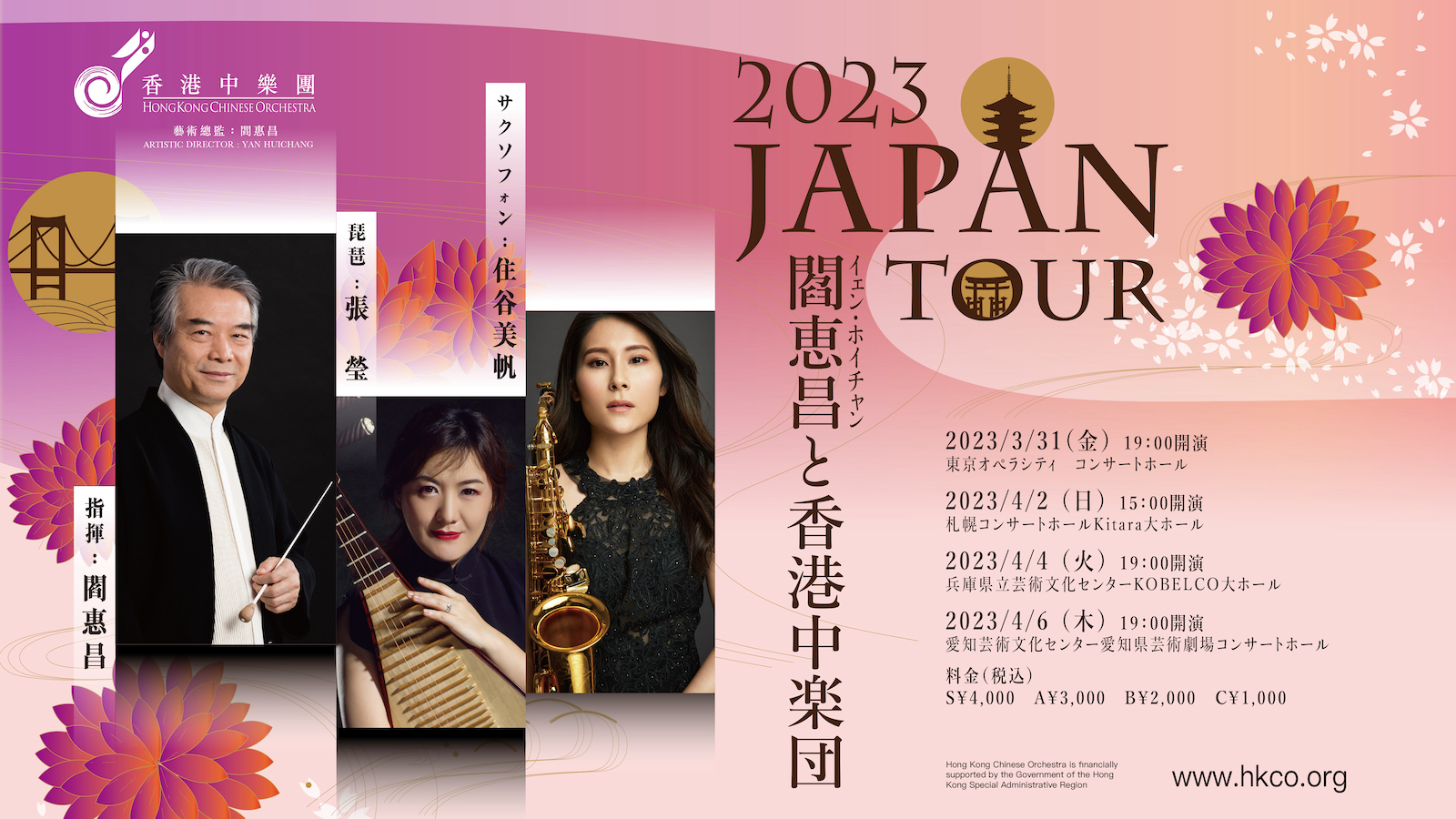The Hong Kong Chinese Orchestra (HKCO) is returning to Japan for four new performances, led by legendary conductor Yan Huichang.
The bowed-string section of the orchestra has been using the award-winning Eco-Huqin series developed by the HKCO since 2009. The design encapsulates a three-pronged motive, which is to address environmental concerns, uphold a musical heritage and break new ground.
HKCO has won accolades as “a leader in Chinese ethnic music” and “a cultural ambassador of Hong Kong.” It is often invited to perform at famous venues and festivals all over the world. Its award-winning track record in the arts, governance and administration, arts education, marketing and promotion has placed it in a leading position among full-sized Chinese music ensembles in the international arena today.
The orchestra explores new frontiers in music through commissioning over 2,400 new works of various types and styles, whether as original compositions or arrangements. In 2021, the HKCO launched the Net Concert Hall, the first ever online Chinese Music Gallery in the world.
The orchestra will perform March 31 at Concert Hall, Tokyo Opera City; April 2 at Main Hall, Sapporo Concert Hall ‘Kitara’; April 4 at Grand Hall, Hyogo Performing Arts Center; and April 6 at Concert Hall, Aichi Prefectural Art Theater, Aichi Arts Center.
The concert will feature five pieces, including the following three:
The Performance of “Essence” (The sixth movement of Ji) by Ng Cheuk-yin
“Ji was composed based on Taichi Master Xing Qilin’s views of the world. From the origins of life and the universe to the cultivation of human character, I am sure that everyone in the world shares certain commonalities in their ideas,” said Ng. “This composition consists of six movements – Infinity, Beginning, Origin, Spirit, Evil and Essence; each section has its own theme and content. One of the best things about expressing something through sound is that it gives each person an opportunity to explore and understand based on their personal feelings and experiences. The finale of this concert, Essence, passes through several stages by the time it reaches its destination.”
Concerto for Pipa: A Fantasy of Flying Apsaras by Kong Zhixuan
“Concerto for Pipa: A Fantasy of Flying Apsaras draws its inspirations from apsara images on the Mogao Grotto murals, which feature Gandhara holding various kinds of musical instruments – pipa, zheng, dizi, sheng and bili etc, with the suggestion of playing in ensemble,” Kong said. “Among these images, ‘playing the pipa on the back’ is the most famous for its artistic impact, and it touches me the most. The music draws its material from #24 Yizhou and #12 Qingbeile of Dunhuang pipa scores, decoded by musicologist Mr Ye Dong. It is based on the structure of the Tang Dynasty daqu (‘grand song’), and blends in musical elements from Central Asia.”
Northwest Suite by Tan Dun
As a Chinese orchestral piece, the music of Northwest Suite rings of the musical elements of the indigenous music of the Loess Plateau in northwestern China. Between the sonorous, robust and full-bodied musical phrases is a pained wistfulness that comes from living in the arid, punishing conditions of the land. The composer has captured this complexity in his music through touching melodies and vivid tone colors, describing the humanism, the pains and the joys of the people living on this land. The music is in four sections: God in Heaven Grants Us Sweet Rain, Rousing Games in the Bridal Chamber, I Miss My Dear Love and Stone-slab Waist Drums.
The concert runs approximately 75 minutes with a 15-minute intermission.
Tickets (starting at 1,000 yen) are available now at https://eplus.jp/sf/word/0000155784
For more information, click here.
© Japan Today

